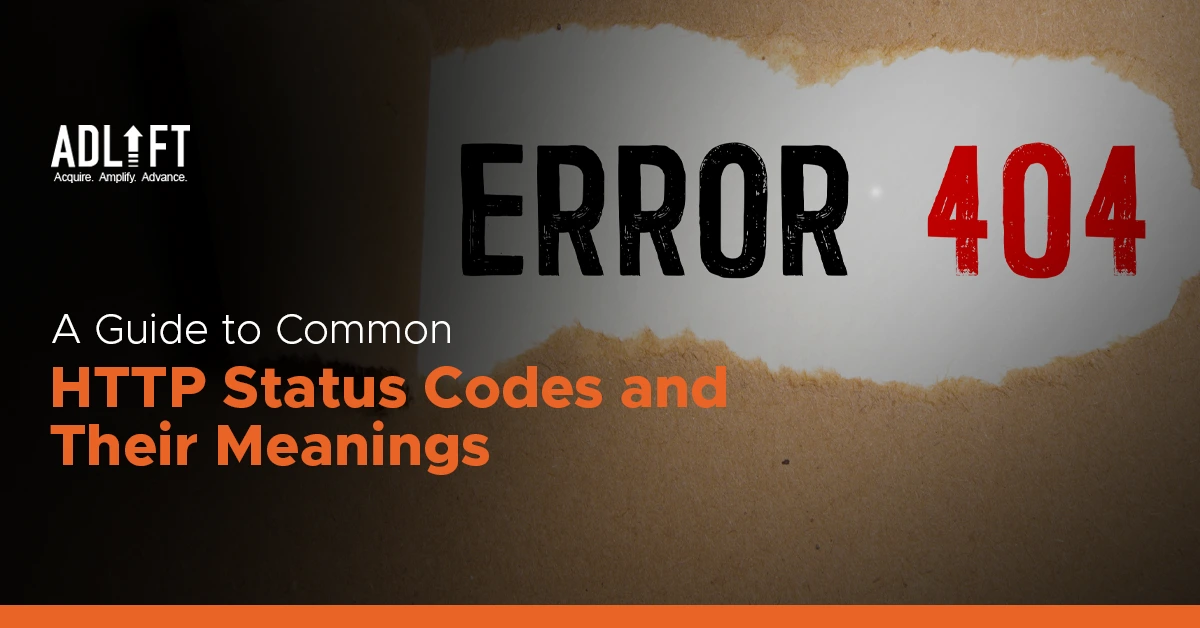A Guide to Common HTTP Status Codes and Their Meanings

You may face various error messages or status codes while visiting different websites when browsing the internet. These response codes, communicated by the Hypertext Transfer Protocol (HTTP), provide valuable information about the outcome of your request. Understanding HTTP codes can help you diagnose issues, troubleshoot errors, and communicate effectively with web servers. This blog will discover some of the most common HTTP response codes, their meanings, and how HTTP status codes impact your browsing experience.
200 OK – Success
The 200 OK HTTP response codes show that the request was successful. It signifies that the server has successfully processed the request and is returning the requested information. This is the most desirable status HTTP response codes, suggesting a successful interaction between your browser and the server.
301 Moved Permanently – Redirect
The 301 status code is a redirection response that indicates a permanent move of the requested resource to a new location. When a server sends a 301 status code, it instructs your browser to update its bookmarks or cache and redirect future requests to the new URL. This is commonly used when a website changes its domain name or moves its content to a different location.
404 Not Found – Page Not Found
The 404 status code is likely the most well-known HTTP status code. It occurs when the requested resource is not found on the server. This could be due to a mistyped URL, a broken link, or a resource intentionally or accidentally removed. When you encounter a 404 error, the server cannot locate the page you are searching for.
403 Forbidden – Access Denied
The 403 status code indicates that you cannot access the requested resource. It typically occurs when you attempt to access a page or resource that requires authentication or permission and do not have the necessary credentials. This could be due to limited access to certain files or directories on the server.
500 Internal Server Error – Server-side Issue
The HTTP 500 status code is a generic error message that indicates an internal server error. HTTP 500 status code means that something has gone wrong on the server side, preventing it from fulfilling the request. The specific cause of the HTTP 500 status code is not disclosed to the client, making it more challenging to troubleshoot. It could be due to server misconfigurations, programming errors, or resource exhaustion.
503 Service Unavailable – Server Unavailable
The 503 status code indicates that the server is temporarily unavailable to handle the request. This could be due to server maintenance, overloading, or temporary downtime. The server informs your browser that it cannot fulfil the request, but it may become available later. This HTTP status code often accompanies a Retry-After header indicating when the server expects to be available again.
400 Service Unavailable – Bad Request
The HTTP 400 status code, commonly known as “Bad Request,” is a client error response that indicates the server cannot understand or process the request due to invalid syntax or missing information. 400 HTTP status code occurs when the server cannot fulfil the request due to client-side errors such as incorrect URL formatting, missing or malformed headers, or invalid data in the request payload.
The client should review and modify the request to address the HTTP 400 status code before resubmitting it to the server. The HTTP 400 status code is a generic error message that indicates various client-side issues without revealing specific details.
Conclusion
HTTP status codes are required in communicating between your browser and web servers. Understanding the meaning of these codes can help you diagnose and troubleshoot issues when browsing the internet. In this blog, we have covered just a few of the most common HTTP status codes and their meanings, but there are many more. By educating yourself with these codes, you can better understand the outcome of your requests, communicate effectively with servers, and resolve any issues that may arise during your browsing experience.

